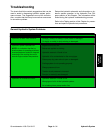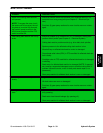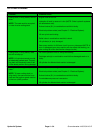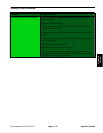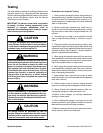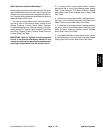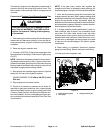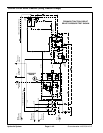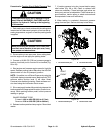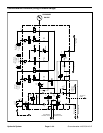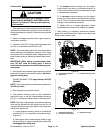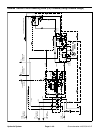
Groundsmaster 4100--D/4110--D Hydraulic SystemPage 4 -- 39
Which Hydraulic Tests Are Necessary?
Before beginning any hydraulic test, identify if the prob-
lem is related to the traction circuit, cutting (mow) circuit,
lift/lower circuit, steering circuit or engine cooling fan cir-
cuit. Once the faulty systemhas been identified, perform
tests t hat relate to that circuit.
1. If a traction circuit problem exists, consider perform-
ing one or more of the following tests: Traction Circuit
Charge Pressure, Traction Circuit Relief Pressure,
Counterbalance Pressure, Reverse Traction Circuit Re-
ducing Valve (PR) Pressure, Rear Traction Circuit Relief
Valve (RV) Pressure, Piston (Traction) Pump Flow and/
or Gear Pump Flow Tests.
IMPORTANT: Refer to Traction Circuit Component
Failure in the General Information section of this
chapter for information regarding the importance of
removing contamination from the traction circuit.
2. If a cutting (mow) circuit problem exists, consider
performing one or more of the following tests: Cutting
Deck Circuit Pressure, PTO Relief Pressure, Cutting
Deck Motor Case Drain Leakage and/or Gear Pump
Flow Tests.
3. If a lift/lower circuit problem exists, consider perform-
ing one or more of the following tests: Lift/Lower Circuit
Relief Pressure and/or Gear Pump Flow Tests.
4. If a steering circuit problem exists, consider perform-
ing one or more of the following tests: Steering Circuit
Relief Pressure, Steering Cylinder Internal Leakage
and/or Gear Pump Flow Tests.
5. If a engine cooling fan circuit problem exists, consid-
er performing one or more of the following tests: Engine
Cooling Fan Circuit and/or Gear Pump Flow Tests.
Hydraulic
System



